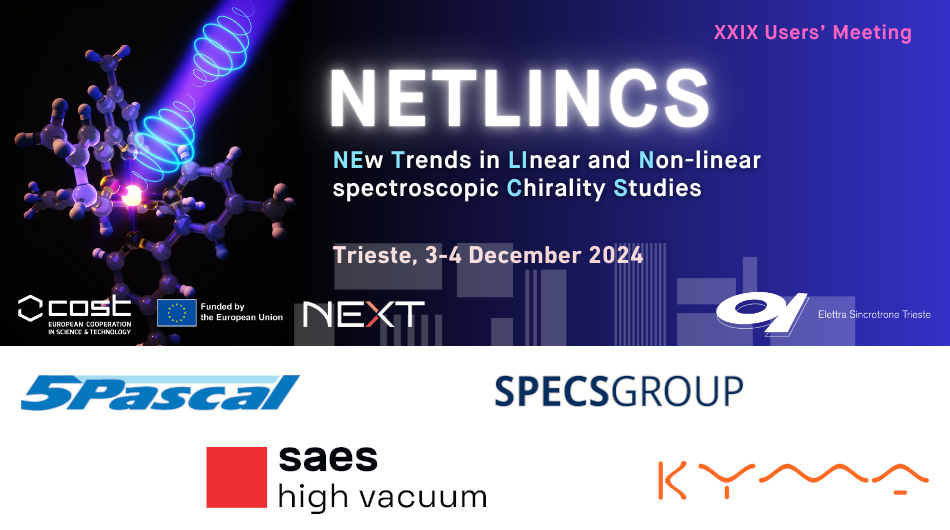Speaker
Description
PhotoElectron Circular Dichroism (PECD) is an effect driven by electric dipole interactions between an ensemble of chiral molecules and ionizing circularly polarized light [1,2]. It results in a preferential emission direction of photoelectrons along the light propagation axis, leading to an asymmetry that can be observed by recording their angular distribution with an electron detector. Established as a benchmark method to study the static properties of chiral molecules in the gas phase with high sensitivity [3,4], it was extended to the time domain for the investigation of chiral dynamics less than a decade ago [5].
After reviewing the achievements of time-resolved PECD in molecular spectroscopy, I will present the capabilities of our few-femtosecond UV light sources [6,7] to reveal the contribution of ultrafast electron dynamics to the chiral properties of photoexcited neutral molecules [8]. Our results show an ultrafast inversion of the molecular chiroptical response in less than 10 fs after UV excitation, which is captured by modulations of photoelectron angular distributions produced by a time-delayed, circularly polarized ionizing pulse with few-optical-cycle duration. Our theoretical modelling shows that the electronic coherences induced by the UV radiation also generate chiral currents along the molecular structure, offering important prospects for the enantiosensitive, charge-driven reactivity of chiral molecules [9]. As a proof of principle, I will present a case where chiral electron currents can be used as a tool to select the photodissociation direction of chiral molecules with few-fs resolution. Finally, some concluding remarks will be made on the new opportunities made possible by few-femtosecond PECD.
References
[1] B. Ritchie, Phys. Rev. A. 13, 1411–1415 (1976).
[2] N. Böwering et al., Phys. Rev. Lett. 86, 1187–1190 (2001).
[3] L. Nahon et al., J. Elec. Spectr. Relat. Phen. 204, 322 (2015).
[4] L. Nahon et al., Phys. Chem. Chem. Phys. 18, 12696 (2016).
[5] A. Comby et al., J. Phys. Chem. Lett. 7, 4514–4519 (2016).
[6] M. Galli et al., Opt. Lett. 44, 1308-1311 (2019).
[7] V. Wanie et al., Rev. Sci. Instrum. 95, 083004 (2024).
[8] V. Wanie et al., Nature, 630, pp. 109-115 (2024).
[9] A. F. Ordonez et al., Commun Phys. 6, 257 (2023).

